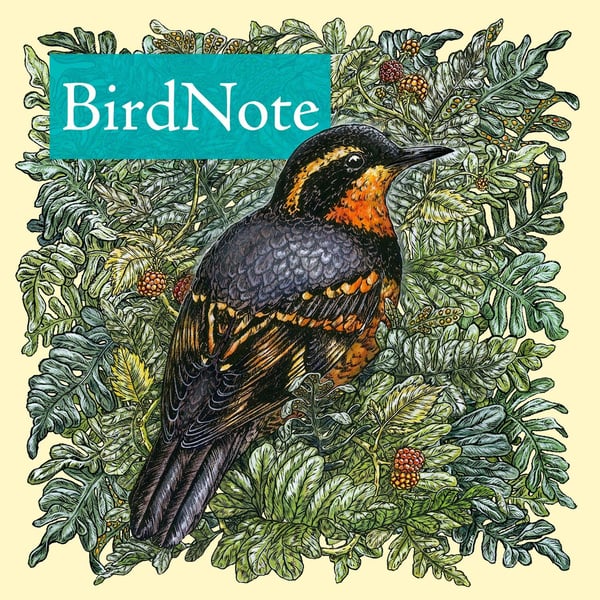Crowned-Pigeons: Big, Beautiful, Threatened
BirdNote Daily
BirdNote
4.6 • 1.2K Ratings
🗓️ 5 October 2024
⏱️ 2 minutes
🧾️ Download transcript
Summary
Transcript
Click on a timestamp to play from that location
| 0:00.0 | This is a bird note. |
| 0:05.0 | There are pigeons and then there are pigeons. |
| 0:10.0 | A city pigeon is about a foot long, a pretty average size for a bird. |
| 0:15.0 | But imagine a pigeon the size of a turkey vulture or a Canada goose. |
| 0:20.0 | Meet the crowned pigeon. |
| 0:23.0 | Standing on a low branch in a tropical forest is a glistening blue-gray bird with an iridescent purple chest. |
| 0:34.6 | The immense pigeon raises its crown feathers to form a spectacular tall lacy crest. |
| 0:41.7 | Crowned pigeons are forest birds and fruit eaters. |
| 0:45.0 | Four species inhabit the large equatorial island of New Guinea and a few smaller islands. |
| 0:50.0 | But why are these pigeons so big? |
| 0:52.0 | An island's free of large predators, evolution has sometimes |
| 0:56.2 | favored the development of super-sized birds. That was true of the Moas of New Zealand and |
| 1:02.0 | the Dodos of Mauritius. But unlike Moas and |
| 1:05.7 | Dodos, which are both extinct, crowned pigeons can fly, and they do so with a loud |
| 1:11.3 | wing crack. Their ability to fly may be what has allowed |
| 1:18.8 | crowned pigeons to survive this long. They have shared New Guinea with humans for at least 40,000 years and |
| 1:26.1 | with care we could share it with them for at least 40,000 more. For Bird Note, I'm Michael Stein. You're going to be. |
Please login to see the full transcript.
Disclaimer: The podcast and artwork embedded on this page are from BirdNote, and are the property of its owner and not affiliated with or endorsed by Tapesearch.
Generated transcripts are the property of BirdNote and are distributed freely under the Fair Use doctrine. Transcripts generated by Tapesearch are not guaranteed to be accurate.
Copyright © Tapesearch 2025.

